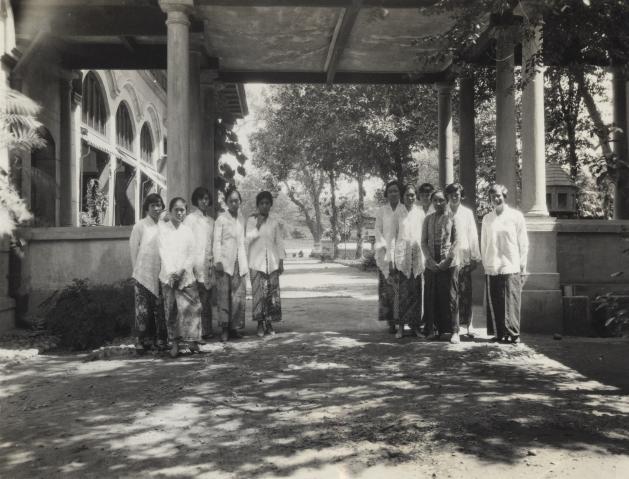‘Two Worlds Collide’
This particular batik never ceases to amaze me. It shows both Western and Eastern cultural identities in a single fabric. The contrast between the Art Nouveau style with traditional batik motifs creates balance and emphasizes the batik as a ‘neutral ground’ for both communities to wear.
If we look closely at the picture in fig. 1, we can see what Jans and other women looked like in the Dutch East Indies. We can see what they are wearing. Their kebayas feature intricate laces or hand embroidery, with Western influence and Eastern inspiration. Their batik sarongs are multicultural. This photo also shows how diverse the cultures in the Dutch East Indies were. A group of women of mixed descent carrying layers of stories and traditions passed down from their forefathers.
Batik became something that people inherited from their ancestors - some were donated or kept in boxes, others displayed as home decor. Yet batik was rarely used as a sarong. It became unknown and distant. Perhaps unraveling the story through this batik is a starting point to learn more about the lifestyle and society in the Dutch East Indies so as to uncover the connection between Indonesia and the Netherlands within society during the Dutch East Indies era.
